THE OKANAGAN VALLEY, PART II
OSOYOOS, Okanagan Valley, B.C. — No where is the rapid pace of the B.C. wine industry more evident than in the deep south of the Okanagan Valley.
Driving south from Okanagan Falls, with a quick stop at the famous Tickleberry’s for a double-scoop black cherry ice cream cone (irresistible, by the way), the Valley not only heats up to over 40C most of the summer, but flattens into a narrow, guarded valley.
The terroir of the South Okanagan begins at the McIntyre Bluff, which lies on the western side of Okanagan Valley, halfway between Oliver, the self-anointed Wine Capital of Canada, and Okanagan Falls. Vaseux Lake, part of the Okanagan River system, nearly abuts this prominent landmark. This cliff is the steepest and most dramatic in the Okanagan Valley, and the valley itself is the narrowest and most constricted in the Okanagan at this spot. It is here that the soils and climate begin to define a truly southern region unlike any other in British Columbia, or Canada, for that matter.
This distinctive valley is actually the northern most tip of the transcontinental Sonoran Desert with an annual rainfall of 9 inches or less and some of hottest temperatures in Canada.
Its latitude is similar to France with long daylight growing hours, clear unpolluted skies and a light intensity that rivals any wine-growing region in the world.
It is gorgeous here, as everywhere you look the stunning landscape of sunburned hills, sandy desert with its silver sage, antelope bush, and prickly pear cactus, is abutted to the lush greenery of vineyard after vineyard. It is a beautiful collision of raw natural splendour and intrepid winemaker, lured here by both the potential and the challenges of a region so unlike any other in the world.
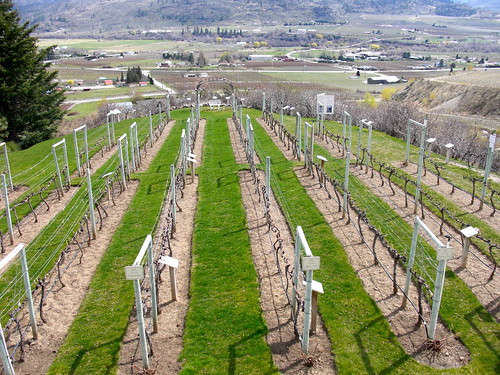
The South Okanagan is made up of three distinct benches each with its own microclimates that define each appellation.
• The Black Sage Bench sits on top of sandy soil that can run up to 300 feet deep. Parts of this area are protected ecological habitats that preserve antelope-brush, bunchgrass, sage and prickly pear cactus.
• The Osoyoos Bench is comprised of soils such as Stepney, Trepanier and Trewitt. These soils have developed in deep gravel-free and stone-free sandy, coarse-textured fluvioglacial deposits and minor fluvial fan deposits. The soils are well to rapidly drained.
• The Golden Mile Bench soils vary from Ponderosa, Ratnip and Stemwinder. They have developed in gravelly, cobbly, stony and bouldery coarse to medium-textured fluvial fan deposits.
Each of these areas bring distinct wine characteristics equal to any appellation found in Burgundy, Bordeaux or the Rhone Valley in France.
The South Okanagan is fertile ground for B.C.’s ripest grapes and is home to the best Bordeaux-style (Cabernet Sauvignon, Merlot, Cabernet Franc) and Rhone-style (Syrah) wines being made in Canada. On the white side, Pinot Gris is a specialty of the region along with Chardonnay and Gewuztraminer.
The area, collectively known as the South Okanagan Wine Association (formerly called Oliver Osoyoos Wine Country), is a region that includes 21 wineries, from McIntyre Bluff to the north to the U.S. border in the south. The stunning beauty of the South Okanagan combined with the near-perfect growing conditions for the major vinifera grapes make it an ideal location for touring, staying and tasting.
The region still has a rural feel to it and is unspoiled by major development, other than the rush by wineries to plant more vineyards, build larger tasting rooms and gorgeous hilltop winery restaurants.
Touring in this region is a wonderful mix of wine, pastoral beauty with creeks, lakes, the historic and aboriginal influences, and stunning lake-side resort relaxation in near-perfect weather conditions from spring to fall.
Here are some highlights, in Part II, of a recent trip back to the Valley (and I apologize for the lateness of this post. I had to hold off posting to my own website until my freelance commitments were published first. You can pick up the current issue of Tidings wine magazine for a different version of this post or check out Traveling Golfer for another version)::
WALNUT BEACH RESORT
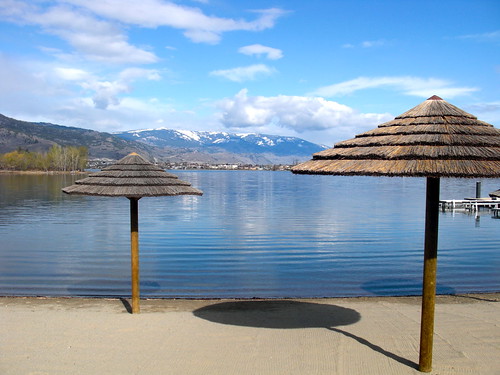
Although there are many choices for accommodations in the South Okanagan, from quaint bed and breakfasts among the vineyards, to major hotels in both Osoyoos and Oliver, as well as the spectacular Spirit Ridge Vineyard Resort and Spa, but it’s hard to beat the Walnut Beach Resort.
This all-suite hotel is located on the edge of Lake Osoyoos with stunning mountain views. The hotel offers a private beach (with a liquor licence!), outdoor swimming pool and a wine bar.
The resort is first class all the way with a kitchen and flat-screen TV in every suite. Wi-Fi and MP3 docking stations are also included.
This resort is at the most southern point of wine country but not that far a drive from the major wineries.
OSOYOOS DESERT CENTRE
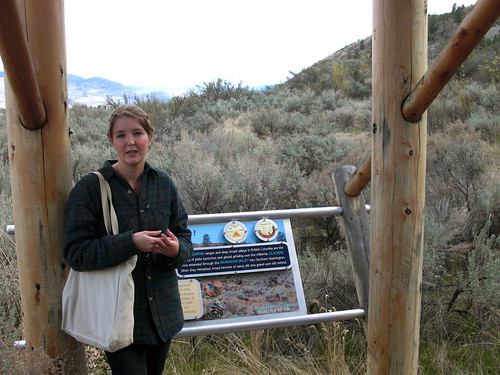
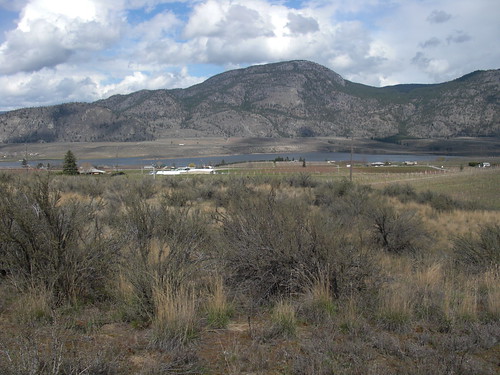
The Osoyoos Desert Centre is an ecological interpretive centre on a protected portion of the Antelope-brush habitat and has a carefully placed boardwalk around the area where visitors can learn about desert ecology, ecological restoration, and conservation of endangered ecosystems in the South Okanagan.
It’s a nice, pleasant walk around the boardwalk and gives visitors a sense of the South Okanagan’s most defining feature.
This extraordinary habitat is one of North America’s most fragile and endangered ecosystems and is home to an exceptional array of desert plants and wildlife some found nowhere else in the world.
WINERIES
There are plenty of great wineries to choose from in the South Okanagan with nearly 95% of the wines made with grapes grown from within 25 kilometres of their wineries.
Some of the key Oliver wineries include Tinhorn Creek, Hester Creek, Inniskillin, Cassini, Road 13 Vineyards, Oliver Twist, Jackson-Triggs and Burrowing Owl. Best grape varieties: Merlot, Chardonnay, Gewurztraminer.
Some of the key Osoyoos area wineries include LaStella, Moon Curser and Nk’Mip. Best grape varieties: Cabernet Sauvignon, Cabernet Franc, Merlot, Chardonnay, Syrah, Zinfandel.

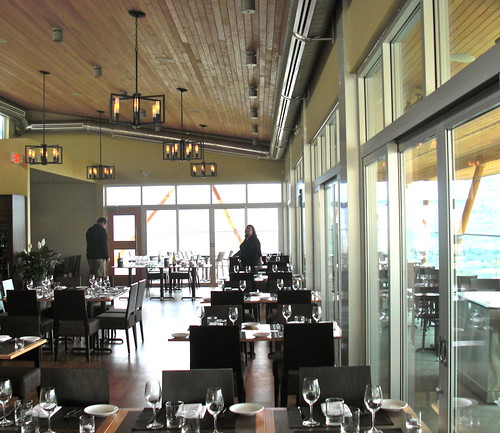
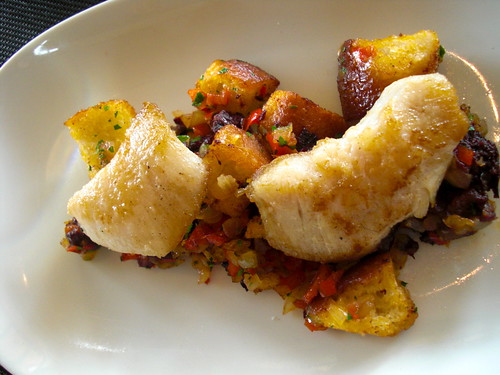

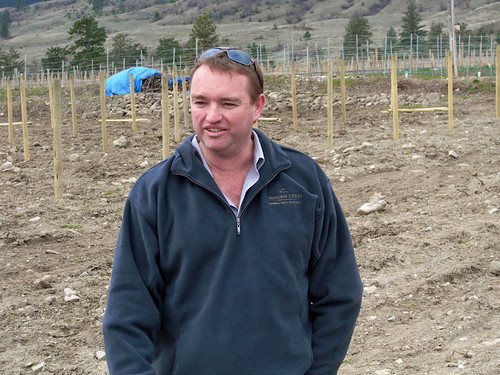
One of the landmark wineries is Tinhorn Creek, located on a hillside overlooking estate vineyards, sagebrush, and the old gold mining creek that is its namesake.
 It’s located just south of Oliver in the coveted Golden Mile wine-growing region.
It’s located just south of Oliver in the coveted Golden Mile wine-growing region.
Tinhorn sources fruit exclusively from its own vineyards: 150 acres of prime land on two very distinct benches — the 100-acre Diamondback Vineyard on the Black Sage Bench and the 50-acre Tinhorn Creek Vineyard on the Golden Mile Bench. It makes two tiers of wines, the single vineyard series featuring Gewurztraminer, Pinot Gris, Chardonnay, Cabernet Franc, Pinot Noir and Merlot, and winemaker Sandra Oldfield’s signature wines made each year when quality dictates what should be made at the top tier.
The winery completed a restaurant at the winery this spring called Miradoro, a spectacular 4,000-square-foot winery restaurant featuring 65 seats inside and another 65 seats out on the wrap-around deck with extraordinary views of the Okanagan Valley.
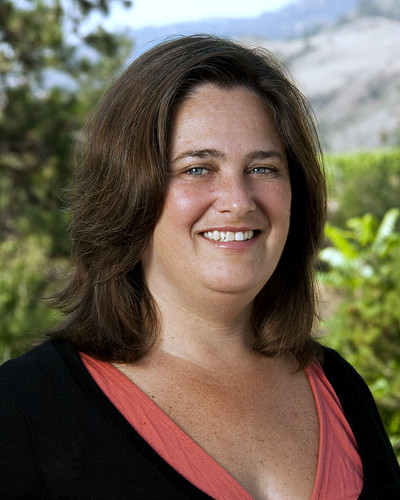
Dig into a plate of pancetta pizza, made in a wood stone oven and cooked Neapolitan style with sourdough and stone ground wheat (it is to die for, by the way), haddock cheeks and marinated octopus all matched with Tinhorn’s delicious Pinot Gris and Syrah.
The menu at the new Miradoro is Mediterranean in style, using seasonal ingredients sourced from local fields, forests and the Pacific Ocean to the west.
Tinhorn wine reviews:
Tinhorn Creek Gewurztraminer 2010 ($18, 90 points) – A Gewurztraminer that totally gets it. If you want to make this variety, make sure it’s balanced out with some decent acid, which is achieved by picking the grapes in intervals to retain both acidity and the ripeness you need for good Gewurz. The nose shows wonderful grapefruit, lychee and floral notes with gorgeous spice. It’s ripe and juicy on the palate in a style that’s not too much lychee and not too much spice and certainly not too much musk. Good fruit, balance and, as mentioned, some decent acid. Well done.
 Tinhorn Creek Chardonnay 2010 ($18, 88 points) — 25% of the fruit in this Chardy was fermented-aged in new French oak. The nose shows tropical fruit, subtle spice, pear and apple fruit. It’s ripe on the palate with a creamy texture, mineral flavours and good length on the finish.
Tinhorn Creek Chardonnay 2010 ($18, 88 points) — 25% of the fruit in this Chardy was fermented-aged in new French oak. The nose shows tropical fruit, subtle spice, pear and apple fruit. It’s ripe on the palate with a creamy texture, mineral flavours and good length on the finish.
Tinhorn Creek Oldfield Series 2Bench White 2010 ($23, 90 points) — A delightful blend of Chardonnay, Sauvignon Blanc, Semillon, Viognier and a pinch of Muscat. The nose is an elegant mélange of melon, apple, peach and spice. It’s gorgeous in the mouth with a fruit-bowl of flavours, spice and a zesty citrus blast on the finish. Could cellar this for two or three years.
Tinhorn Creek Pinot Noir 2008 ($20, 87 points) — A savoury-brambly Pinot with cherry and raspberry fruit on the nose. Shows earthy flavours in the mouth with blackberry and cherry fruits to go with spicy notes.
•••
Miradoro is indicative of the transformation that’s taking place in the South Okanagan as it evolves into a wine destination hot spot.
Next door to Tinhorn, at the Hester Creek Estate Winery, the finishing touches were just being applied during a spring visit to the now-open Terrafina Restaurant, a 45-seat eatery providing an intimate setting with old brick, wooden pillars and iron chandeliers.

It’s an add-on at the winery to entice visitors to stay and enjoy breathtaking views, much like you would find in a villa overlooking the hills in Tuscany, and revel in all that that the South Okanagan Valley can offer.
Hester Creek wine reviews:
Hester Creek Pinot Gris 2010 ($17, 87 points) — A delightful Gris with melon and pear fruits on the nose with a subtle floral note. Love this wine in the mouth with its round, ripe fruits and just a hint of ginger.
Hester Creek Trebbiano 2010 ($19, 89 points) — Hester Creek is the only winery in the Okanagan growing and making this wine. It’s made from vines planted in 1968. The nose shows citrus, peach and melon that all carry to the palate in a fresh, acidic style.
Hester Creek The Judge 2007 ($45, 92 points) — This is new for the winery and now the top wine made at the estate. It’s made from Cabernet Sauvignon, Cab Franc and Merlot in equal amounts and spends two years in oak. The nose shows blackberry, plums and wild spice notes. It’s gorgeous in the mouth with ripe tannins, integrated dark fruits and spice all balanced nicely by vibrant acidity.
•••
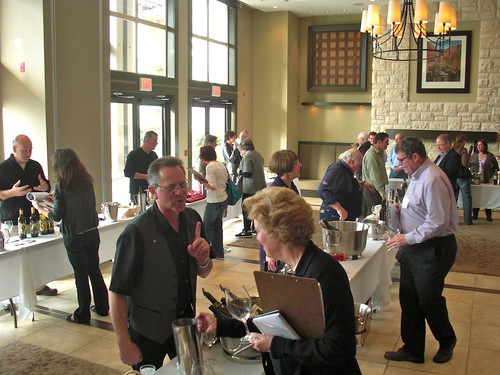
Other wine reviews from a trip through the South Okanagan (and other B.C. wines tasted recently)
 Moon Curser Dead of Night 2009 ($35, 88 points) – The blend from this unusually named winery is 50% Tannat, a noble red varietal traditionally grown in the south of France, and 50% Syrah, from vineyards on Osoyoos’ East Bench. The nose is very fine with earthy-meaty cherry and plum fruits, spice and plenty of oak and vanilla spice. Shows good structure in the mouth, fine tannins, red fruits and balanced spices.
Moon Curser Dead of Night 2009 ($35, 88 points) – The blend from this unusually named winery is 50% Tannat, a noble red varietal traditionally grown in the south of France, and 50% Syrah, from vineyards on Osoyoos’ East Bench. The nose is very fine with earthy-meaty cherry and plum fruits, spice and plenty of oak and vanilla spice. Shows good structure in the mouth, fine tannins, red fruits and balanced spices.
Cassini Cellars Sauvignon Blanc 2010 ($22, 87 points) – A nose of lovely tropical fruit, grass cuttings and herbs. The fruit is ripe with flavours of grapefruit, citrus, herbs and some ripe tropical notes.
Burrowing Owl Syrah 2008 ($30, 90 points) – I adore Okanagan Syrah, it seems perfectly suited to the warm south of the region and produces dense, meaty Syrahs such as this one from Burrowing Owl. The nose is meaty with plums, blackberry and red fruits washed with spice and oak stylings. It shows wonderful structure in the mouth with integrated fruit, round tannins and peppery spices.
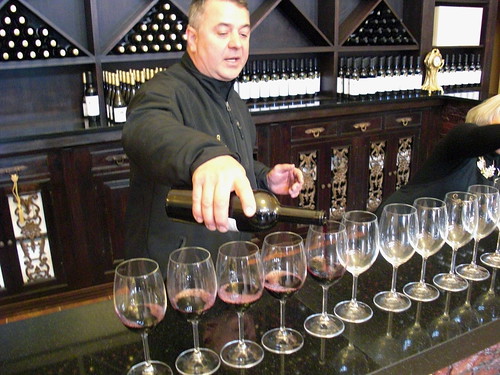
Burrowing Owl Athene 2008 ($37, 91 points) — A blend of Syrah and Cabernet Sauvignon. Quite Rhone-like in the presentation with dark fruits on the nose, spice and pepper. Gorgeous mouth feel, blackberry-currant fruits, toasted oak and lavish spice on the palate.
Jackson Triggs Black Series Sauvignon Blanc 2010 ($13, 87 points) – Totally refreshing style of SB with a varietally correct nose of grass, grapefuit, lime and herbaceous notes that carry to the palate. Refreshing and tart on the palate with racy acidity. Summer bliss.
Jackson Triggs Gold Series Cabernet Shiraz Viognier 2008 ($29, 91 points) — This is a unique blend of Cabernet Sauvignon 49%, Shiraz 48% and Viognier 3% that underwent full malolactic fermentation, and was aged in 50% French and 50% American oak barrels for 18 months. I love the funky nose of expressive blackberry, red fruits, spice and earthy bits. It’s thick and big on the palate with currants, cherry, cassis and a wide range of spice and oak flavours. The tannins need to be tamed before drinking on its own but it has the stuffing to put down in the cellar for a few years.
Inniskillin Discovery Series Marsanne Rousanne 2009 ($20, 88 points) – The blend consists of 60% Marsanne and 40% Rousanne, two classic Rhone varietals. The nose displays floral, pear and pineapple notes. It’s ripe and fleshy on the palate with pear and pineapple fruits. A fruit forward, ripe style.
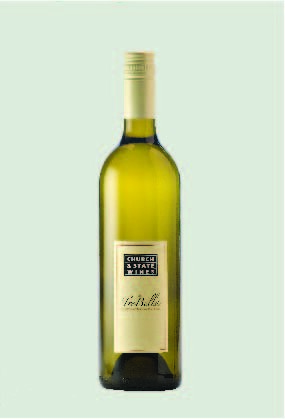 Church & State TreBella 2010 ($25, 91 points) – This is an interesting Rhone-variety blend of Marsanne, Roussan and Viognier. The nose shows floral notes to go with peach and melon fruit. Lovely stone fruits on the palate and wonderful texture and balance.
Church & State TreBella 2010 ($25, 91 points) – This is an interesting Rhone-variety blend of Marsanne, Roussan and Viognier. The nose shows floral notes to go with peach and melon fruit. Lovely stone fruits on the palate and wonderful texture and balance.
Church & State Quintessential 2007 ($50, 92 points) – A blend of the five classic Bordeaux varieties that are each aged in French oak separately for 12 months before being blended and aged for a further 12 months. It’s a big wine, with rich red fruits, vanilla, toast and oak on the nose. The palate reveals firm tannic structure with juicy raspberry-cherry fruit, touches of cassis and kirsch with a bevy of tasty spices and oak undertones. Long aging potential.
Silver Sage Gewurztraminer 2010 ($18, 86 points) – A lovely style of Gewurztraminer with lychee, sweet grapefruit, rose petals and spice on the nose. It’s slightly off-dry but balanced by decent acidity, fresh citrus lime and grapefruit and lychee.
Gehringer Brothers Private Reserve Pinot Gris 2009 ($15, 88 points) – I was impressed with this clean, fresh, flavourful and affordable Gris. The nose is all about fresh but bold green apple and other other orchard fruits. It’s clean and polished on the palate and not too soft and not too crisp. Just balanced and full of honest fruit flavours.
 Nk’Mip Qwam Qwmt Syrah 2007 ($32, 90 points) — This Native owned winery in the South Okanagan, pronounced Inkameep, makes some very fine red wines. This aged Syrah has a nose of roasted meat, blueberry, white pepper, spice and raspberry jam. The palate shows fantastic red fruits, not overly tannic and smooth.
Nk’Mip Qwam Qwmt Syrah 2007 ($32, 90 points) — This Native owned winery in the South Okanagan, pronounced Inkameep, makes some very fine red wines. This aged Syrah has a nose of roasted meat, blueberry, white pepper, spice and raspberry jam. The palate shows fantastic red fruits, not overly tannic and smooth.
Nk’Mip Riesling 2010 ($18, 88 points, tank sample) – I’ve been bugging winemaker Randy Picton for a few years now about Okanagan Riesling and how I feel it lacks the minerality of Niagara Riesling. If anyone can coax those wonderful slate and wet stone qualities from Riesling it should be Nk’Mip, which farms from 30-year-old Riesling vineyards. For the 2010 version, Picton is definitely on the right track. The nose shows citrus, lime and peach notes with a nice bead of minerality creeping in. The palate shows ripe fruit but is balanced out by racy acidity. I love the style, even though I only tasted a tank sample.
Nk’Mip Mer’r’iym 2008 ($50, 91 points) – Meririym (pronounced mur-eem, meaning marriage) is a blend of Cabernet Sauvignon 54%, Merlot 35%, and bits of Malbec, Petit Verdot and Cabernet Franc. It’s a blockbuster, and the first $50 wine produced at this remarkable winery, red with ripe bold red and dark fruits, luscious spice and elegant oak stylings. It’s big and flavourful in the mouth with firm tannic structure, rich plum and cassis fruits and lavish spice. Hold for five to 10 years as it all comes into balance.
Nk’Mip Cellars Qwam Qwmt Meritage 2008 ($30, 90 points) — A beautifully balanced red blend of Merlot, Cabernet Sauvignon and Cabernet Franc. The nose shows cherries, plums, an array of spices and herbs. It has a firm tannic backbone, black cherries, licorice, smoke, fine herbs and lovely texture on the palate. One for the cellar.
Castoro de Oro Heart of Gold 2010 ($21, 89 points) – This winery, formerly known as the Golden Beaver, was forced to change its name when restaurants started refusing to sell the wine because of the perceived connotations of the beaver name (not kidding). The name now literally translates to, you guessed it, golden beaver, which represents the rich heritage of the Okanagan (gold) and Canada (beaver). Read into it what you will, this is their story and they’re sticking to it.
The wine, oh wow, you had me at Heart of Gold, probably one of the GREATEST SONGS EVER by the GREATEST SONG WRITER of all time, Neil Young. It’s an unusual (like Neil) blend of Viognier, Auxerrois and Pinot Blanc. Lovely melon, tropical fruit and floral notes on the nose. It’s a dry style on the palate with decent acidity and chock full of ripe, delicious fruits. Sip, sit back and listen to Heart of Gold and enjoy.
Road 13 Jackpot Pinot Noir 2008 ($40, 91 points) — A fruity nose of black cherry, spice, cedar and leather. It shows what it’s truly made of on the palate and it’s all about elegance and balance between fruit, spice and oak. It’s a delicious wine that keeps on giving.
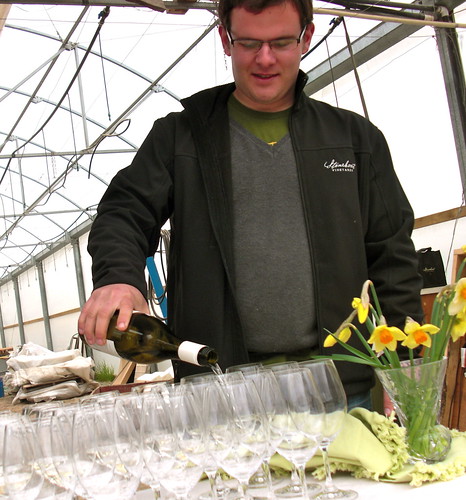
Stoneboat Pinot Gris 2010 ($19, 88 points) — A gorgeous Gris with a nose that’s bursting in citrus, peach and melon notes. The palate reveals juicy fruits, bright, fresh acidity and a nice bead of minerality.
Joie Farm Rose 2010 ($20, 88 points) — A blend of Pinot Noir and Gamay, the nose starts with strawberry, raspberry and blueberry fruits, just like the aromas at a local fruit stand. In the mouth the cherry, raspberry and Clementine notes are joined by blueberry and currants all on a racy spine of acidity. Wonderful!
Joie Farm Unoaked Chardonnay 2010 ($23, 87 points) — A nose of green apple, peach, minerals and a touch of honey, even though the wine is essentially dry. It’s juicy and in your face on the palate with mouth-coating apple, a slightly creamy feel, bright acidity and stony minerality.
Joie Farm Muscat 2010 ($23, 91 points) — Simply one of the best Muscats I have tasted from Canada. Pure, rich notes of summer peach, hints of orange rind and white flowers. It’s laser sharp on the palate with fresh peach flavours and lemon-lime spritz. A zesty, beautiful thing.
Joie Farm A Noble Blend 2010 ($24, 91 points) — The blend is Gewurztraminer, Riesling, Pinot Auxerrois and Pinot Gris. The result is this now classic Joie Farm beauty. Such wonderful aromatics of lime, grapefruit, white peach and honeysuckle. It’s off-dry on the palate with succulent citrus fruits and searing acidity.
Disclaimer: The trip to the Okanagan Valley was a fam trip funded by the South Okanagan Wine Association and the B.C. Wine Institute. There were no conditions placed on mentions or tone of the articles that came out of the trip of any sort. In fact, there was no guarantee that anything would be written at all.
Enjoy!


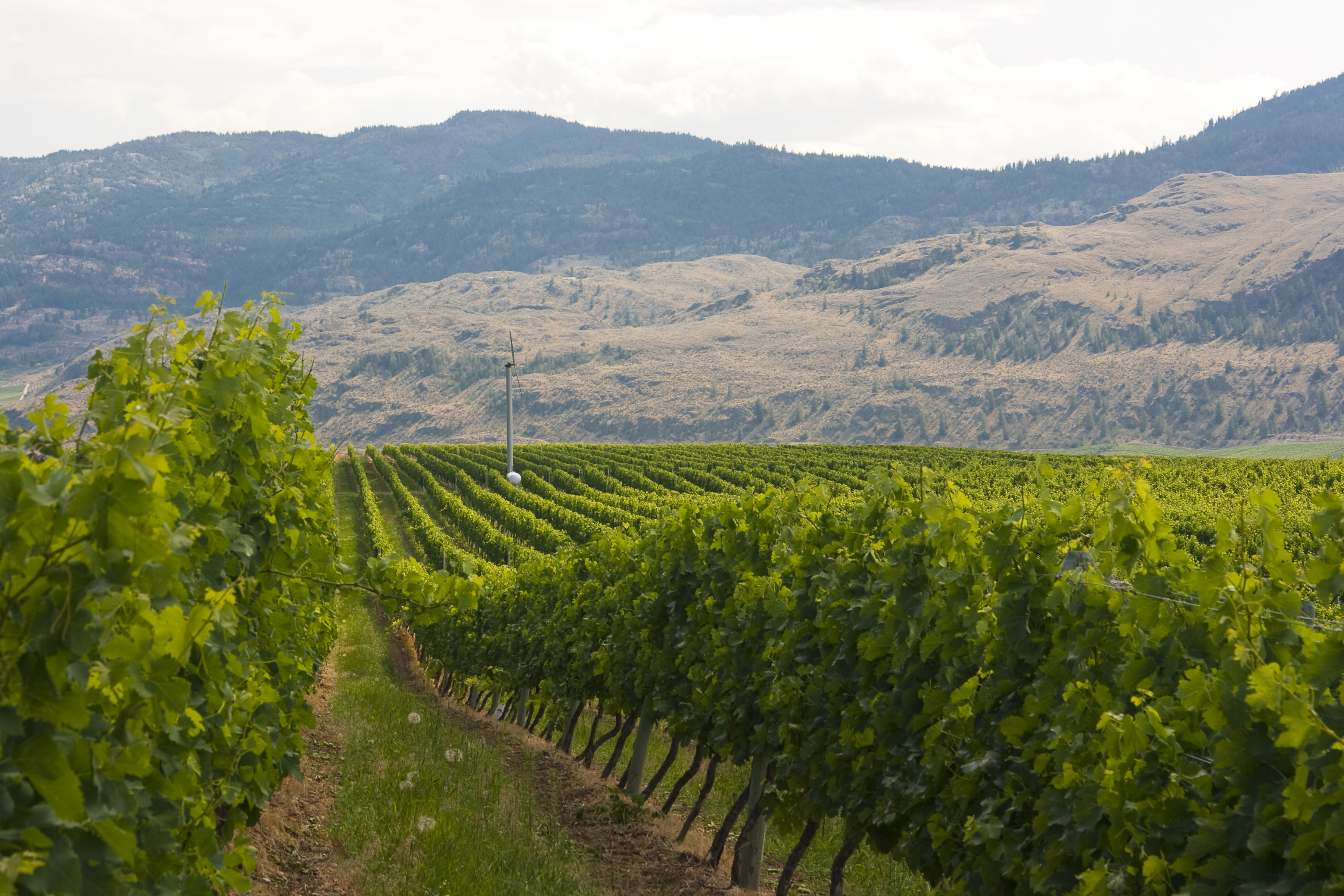

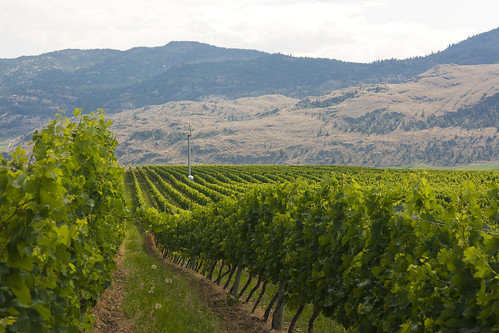



Comment here